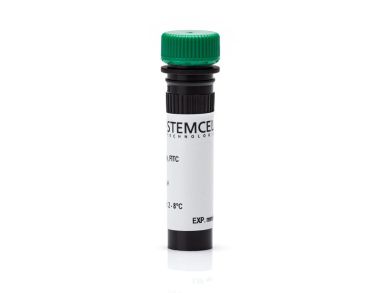搜索结果: 'methocult media formulations for mouse hematopoietic cells serum containing'
-
 抗人CD105抗体,clone 43A3 抗人、小鼠CD105(内皮糖蛋白)的小鼠Monoclonal IgG1抗体
抗人CD105抗体,clone 43A3 抗人、小鼠CD105(内皮糖蛋白)的小鼠Monoclonal IgG1抗体 -
 抗人CD105抗体,clone SN6h,APC 抗人、小鼠CD105(内皮糖蛋白)的小鼠Monoclonal IgG1抗体
抗人CD105抗体,clone SN6h,APC 抗人、小鼠CD105(内皮糖蛋白)的小鼠Monoclonal IgG1抗体 -
 抗人CD117(c-Kit)抗体,clone 104D2 抗人、食蟹猴、牛CD117(c-Kit)的小鼠Monoclonal IgG1抗体
抗人CD117(c-Kit)抗体,clone 104D2 抗人、食蟹猴、牛CD117(c-Kit)的小鼠Monoclonal IgG1抗体 -
 抗人CD11b抗体,clone ICRF44 抗人、恒河猴、食蟹猴CD11b的小鼠Monoclonal IgG1抗体
抗人CD11b抗体,clone ICRF44 抗人、恒河猴、食蟹猴CD11b的小鼠Monoclonal IgG1抗体 -
 抗人CD123(IL-3Rα)抗体,clone 6H6 抗人、恒河猴、白眉猴CD123 (IL-3Rα)的小鼠Monoclonal IgG1抗体
抗人CD123(IL-3Rα)抗体,clone 6H6 抗人、恒河猴、白眉猴CD123 (IL-3Rα)的小鼠Monoclonal IgG1抗体 -
 抗人CD137(ILA)抗体,clone 4B4-1 抗人、猴CD137的小鼠Monoclonal 抗体
抗人CD137(ILA)抗体,clone 4B4-1 抗人、猴CD137的小鼠Monoclonal 抗体 -
 抗人CD138(Syndecan-1)抗体,clone MI15 抗人、恒河猴、食蟹猴CD138(syndecan-1)的小鼠Monoclonal IgG1抗体
抗人CD138(Syndecan-1)抗体,clone MI15 抗人、恒河猴、食蟹猴CD138(syndecan-1)的小鼠Monoclonal IgG1抗体 -
 抗人CD14抗体,clone M5E2 抗人、恒河猴、食蟹猴CD14的小鼠Monoclonal IgG2a抗体
抗人CD14抗体,clone M5E2 抗人、恒河猴、食蟹猴CD14的小鼠Monoclonal IgG2a抗体 -
 抗人CD14抗体,clone MoP9 抗人、恒河猴、食蟹猴CD14的小鼠Monoclonal IgG2b抗体
抗人CD14抗体,clone MoP9 抗人、恒河猴、食蟹猴CD14的小鼠Monoclonal IgG2b抗体 -
 抗人CD154(CD40L)抗体,clone 5C8 抗人CD154(CD40L)小鼠Monoclonal 抗体
抗人CD154(CD40L)抗体,clone 5C8 抗人CD154(CD40L)小鼠Monoclonal 抗体 -
 抗人CD16抗体,clone 3G8 小鼠抗人、恒河猴、食蟹猴CD16 Monoclonal IgG1抗体
抗人CD16抗体,clone 3G8 小鼠抗人、恒河猴、食蟹猴CD16 Monoclonal IgG1抗体 -
 抗人CD184(CXCR4)抗体,clone 12G5 小鼠Monoclonal IgG2a抗体,抗人、恒河猴、食蟹猴CD184(CXCR4)
抗人CD184(CXCR4)抗体,clone 12G5 小鼠Monoclonal IgG2a抗体,抗人、恒河猴、食蟹猴CD184(CXCR4)


 EasySep™小鼠TIL(CD45)正选试剂盒
EasySep™小鼠TIL(CD45)正选试剂盒





 沪公网安备31010102008431号
沪公网安备31010102008431号